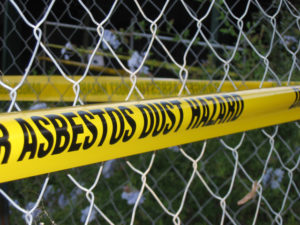As a landlord, if you suspect or know of asbestos in a rental, do you know what your responsibilities are? Asbestos was a commonly used building material up to and including the 1980s. However, homes which were built or renovated before 2000 may also contain it. Asbestos is one of six natural silicate materials which were woven into building and insulation materials. In a stable condition, it poses limited risks. However, when it is damaged, fibres are released into the air as dust. When asbestos dust is inhaled, the microscopic particles remain inside a body forever, causing illness, inflammation, scarring and genetic damage including cancer.
There are now regulations regarding the identification and management of asbestos in a rental property, and that’s what we’re discussing today.
Managing Asbestos in a Rental Property
The Health and Safety at Work Act 2015 and the Health and Safety at Work (Asbestos) Regulations 2016 set out the responsibilities of landlords whose properties have or may have asbestos. As a PCBU (person conducting a business or undertaking), you have a responsibility to manage the risk tenants and other occupants may face if coming in contact with asbestos. This will most likely occur when a tradesperson is on site doing renovations or remedial work.
It is compulsory before any renovations or major repairs to check for asbestos in a rental built, altered or refurbished between 1950 and 200. This can be done by a certified asbestos professional, who can assist with the identification, sampling and testing of possible asbestos. This professional can also identify if the asbestos is stable or unstable, and what your options are. For example, stable undamaged materials containing asbestos require no action. If it is disturbed, damaged and unsafe, it can be sealed, encased or removed.
If the presence of asbestos is confirmed and a written asbestos management plan created, you must give a copy of it to your property manager, tenants and any tradesperson going onto your property. The plan should include information about:
- The location and type of asbestos
- How the asbestos risks will be managed
- What procedures must be followed during remedial work
- How asbestos incidents will be recorded
- A timetable which helps you manage asbestos exposure risks
- Information on tradespeople or other PCUBs who undertake asbestos work on your property
As Auckland residential property managers, we can make recommendations for asbestos professionals who can assist with the creation of your asbestos management plan. We can also help you manage your risk when working with other PCUBs and tenants. For more information, contact us today.



Comments are closed.